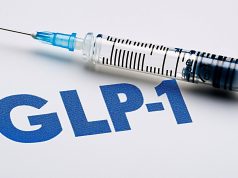Ten-year cumulative incidence of CVD events higher than predicted incidence based on FRS
TUESDAY, July 7, 2015 (HealthDay News) — Many newly diagnosed psoriatic arthritis (PsA) patients have an increased risk of future cardiovascular disease (CVD), according to a study published in the July issue of Arthritis Care and Research.
Floranne C. Ernste, M.D., from the Mayo Clinic in Rochester, Minn., and colleagues examined the prevalence of CVD risk factors at initial onset of PsA and compared the observed incidence of CVD events with that predicted by the Framingham Risk Score (FRS). Data were included for a cohort of 158 patients with PsA who fulfilled Classification of Psoriatic Arthritis criteria for PsA in 1989 to 2008 (mean age, 43.4 years; 61 percent men; 44 percent obese).
The researchers found that, at PsA incidence, 34 percent of patients presented with two or more CVD risk factors. Of the 126 patients aged ≥30 years at PsA incidence and without prior history of CVD, 33 percent had a FRS ≥10 percent, and 11 percent had an FRS ≥20 percent. In the first 10 years of disease duration, 18 patients experienced a CVD event. For CVD events, the 10-year cumulative incidence was 17 percent, significantly higher than the predicted incidence based on the FRS (standardized incidence ratio, 1.80; P = 0.012).
“In summary, our findings demonstrate that patients with newly diagnosed PsA have an increased risk for CVD, and the FRS underestimates the magnitude of this risk,” the authors write.
The study was funded by Amgen.
Copyright © 2015 HealthDay. All rights reserved.








